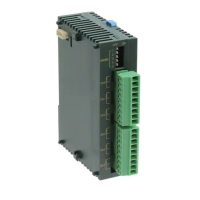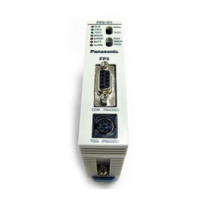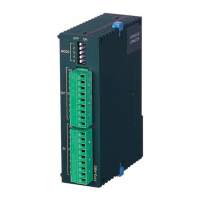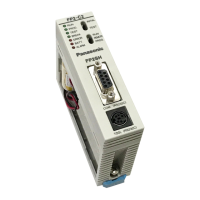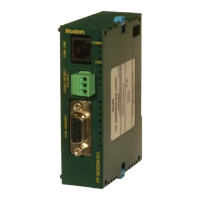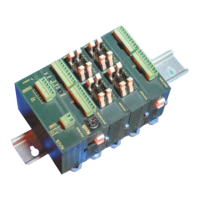14.1 Programming Cautions
14-3
14.1.4 Types of Positioning Data Setting Areas
The positioning unit has a standard 600-point positioning data setting area and 25-point
extended area with the following characteristics. Use either of them according to the
application.
Comparison of standard area and expansion area
Items Standard area Extended area
No. of positioning data
tables
600 tables 25 tables
Table number 1 to 600 10001 to 10025
Positioning parameter
settings
on Configurator PM7
(note 1)
Available Available
Positioning data settings
on Configurator PM7
(note 2)
Available
Data that has been set is downloaded
along with other project data including
the program to the CPU unit.
Positioning data will be calculated and
each type of operation will be ready to
start when the power is turned on or the
CPU unit is set to RUN mode.
Not available
Positioning data setting
with user program
(note 2)
Available
Each type of operation will be ready to
start after the data is transferred to the
unit memory (UM) area with the user
program and a recalculation request is
made.
Available
Each type of operation will be ready to
start after the data is transferred to the
unit memory (UM) area with the user
program. No recalculation request is
required.
Characteristics
In the case of setting positioning data
with the Configurator PM7, the start will
be quicker than that with the extended
area used.
In the case of setting positioning data
with a user program, the start will be
quicker than that with the standard area
used.
Application
Suitable to applications where the
movement amount, target speed, and
other positioning data are determined.
This is suitable for cases where
positioning data fluctuates according to
the operation results of the PLC.
(Note 1): Positioning parameters refer to operating conditions, such as the JOG operation and home return conditions
along with the limit input logic, and deceleration stop time.
(Note 2): Positioning data refers to the individual positioning information such as the movement amount, target speed,
acceleration and deceleration time, and operating pattern data, and other individual positioning information.
Calculation of reconstructing of standard area
The calculation of reconstruction (recalculation) will be required if the standard positioning
data area is overwritten with a user program. If the data is not recalculated after rewriting the
positioning table by the program, note that the operation will be executed with the previous
positioning table. The recalculation procedure is as follows:
1. Change the positioning table in the unit memory.
2. Turn ON the recalculation request signal (Y7) in the I/O area.
3. Check that the recalculation completion signal (X7) in the I/O area turns ON, and start a
desired type of operation.
(Note) The I/O numbers of the recalculation request signal (Y7) and the recalculation completion signal (X7) vary with
the first word number allocated to the unit.
Phone: 800.894.0412 - Fax: 888.723.4773 - Web: www.clrwtr.com - Email: info@clrwtr.com

